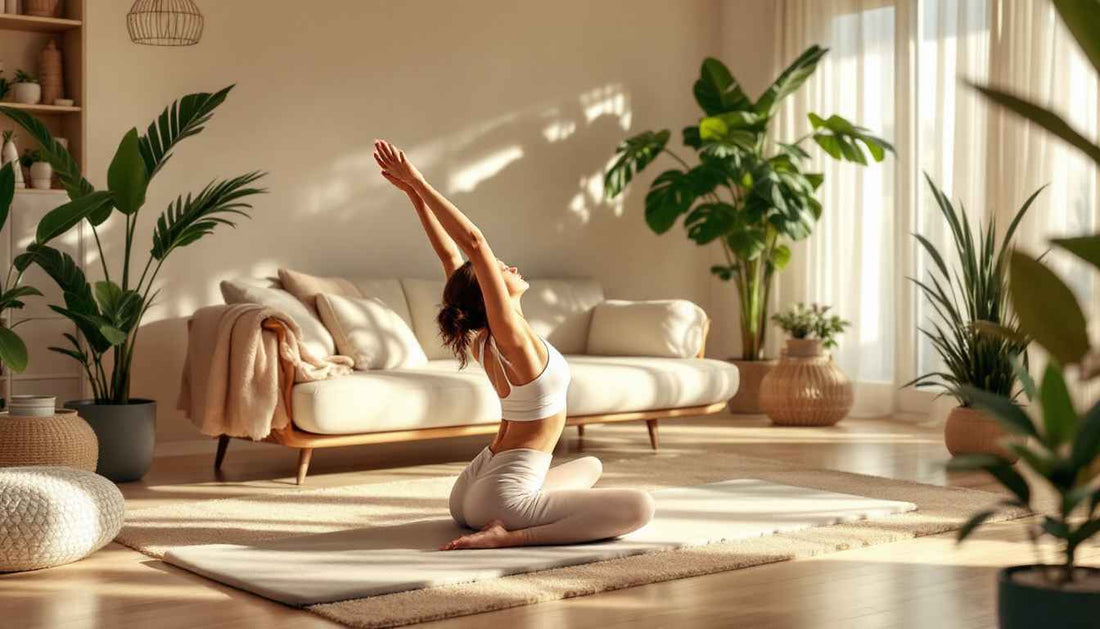
How to Create a Pain-Free Home: Ergonomic and Wellness Tips
Share
Your home should be a sanctuary—not a source of stress or pain. Yet for millions of people, poor ergonomics, clutter, and subtle environmental triggers are making chronic pain worse. Whether you're dealing with back pain, joint stiffness, or general discomfort, making simple adjustments to your home environment can dramatically reduce pain and promote long-term wellness. In this complete guide, we’ll show you exactly how to design a pain-free home using ergonomic science and proven wellness tips.
Why Your Home Environment Matters for Pain Management
Chronic pain isn't just caused by injuries or aging—it can also be intensified by your daily surroundings. Bad posture, awkward furniture, poor lighting, and even the way your space is organized can strain your body over time.
Creating a pain-free home starts by recognizing the hidden stressors in your living space and taking intentional steps to eliminate them.
1. Ergonomic Furniture: Your First Line of Defense
Invest in supportive seating
- Look for chairs with lumbar support, adjustable height, and a comfortable seat cushion.
- If you work from home, upgrade your office chair and desk to ergonomically designed models.
Optimize your sleep setup
- Choose a mattress that supports your natural spinal curve (medium-firm works for most people).
- Use orthopedic pillows or memory foam to keep your neck and back aligned while you sleep.
Standing desk options
- If you're at your desk for hours a day, a height-adjustable desk can reduce pressure on your spine and hips.
Pro Tip: Arrange your furniture so you're not constantly twisting, reaching, or slouching.
2. Room-by-Room Pain Prevention Strategies
Living Room
- Keep remote controls, books, and other daily items within easy reach.
- Use footstools to elevate your legs and improve circulation.
- Avoid overly soft couches that lack lumbar support.
Bedroom
- Maintain a cool, dark, and quiet sleeping environment for better sleep quality (which reduces pain sensitivity).
- Keep the path to the bathroom clear to prevent trips and falls.
Bathroom
- Install grab bars near the toilet and shower if balance is an issue.
- Use a bath mat with a non-slip surface to reduce fall risks.
Kitchen
- Store frequently used items at waist level to avoid reaching or bending.
- Use anti-fatigue mats if you spend a lot of time standing while cooking.
3. The Power of Lighting and Layout
Natural light = less pain
- Studies show that exposure to natural sunlight can improve mood and reduce inflammation.
- Open your blinds during the day and consider full-spectrum light bulbs in darker rooms.
Declutter your space
- Clutter can lead to physical and mental stress.
- Clear pathways to reduce the risk of falls and reduce mental fatigue.
4. Movement and Flow: Design for Gentle Activity
Create movement-friendly spaces
- Make space for yoga, stretching, or light exercise.
- Keep your foam roller, massage tools, or resistance bands easily accessible.
Use visual cues for posture
- Post a small note at your desk: "Sit tall. Relax shoulders. Breathe."
5. Temperature, Sound, and Scent: Hidden Triggers of Tension
- Keep it cool: Heat can cause fatigue and muscle tension. Keep your home around 68–72°F for optimal comfort.
- Soundscapes for stress relief: Background music or white noise machines can reduce sensory overload and lower cortisol levels.
- Aromatherapy for pain relief: Scents like lavender, eucalyptus, and peppermint can ease tension headaches and promote relaxation.
6. Daily Wellness Habits to Build Into Your Home Routine
- Stretch first thing in the morning
- Drink water regularly to prevent stiffness and fatigue
- Practice 5-10 minutes of breathwork or mindfulness
- Take microbreaks if you’re sitting for long periods
These micro-habits amplify the benefits of a well-designed space.
7. Wearable and At-Home Pain Relief Tools
Complement your ergonomic home setup with tools like:
- Wearable TENS units for muscle recovery
- Heated wraps for back and neck tension
- Compression leg sleeves for circulation
- Massage guns and foam rollers for quick relief
Explore our Recovyx Recovery Tools Collection to discover pain solutions that fit seamlessly into your home routine.
Internal Links
- Discover Small Lifestyle Tweaks That Make a Big Difference in Pain
- Explore Top Wearable Devices for Pain-Free Living in 2025
FAQ – People Also Ask
Q: What’s the best chair for lower back pain?
A: Look for an ergonomic chair with lumbar support, adjustable height, and a slight recline to reduce lower back strain.
Q: Can rearranging my home reduce pain?
A: Yes, optimizing furniture placement, lighting, and accessibility can reduce joint strain and support better posture.
Q: How do I make my home more ergonomic?
A: Use supportive seating, organize tools and appliances within easy reach, and reduce clutter to minimize strain.
Final Thoughts: Comfort Is a Daily Decision
Designing a pain-free home doesn’t require a full renovation—just small, consistent changes that support your comfort, mobility, and peace of mind. Start with one room, one adjustment at a time.
CTA: 👉 Want to make your home a sanctuary for healing? Browse our collection of smart recovery tools to bring ergonomic wellness into your everyday life.
